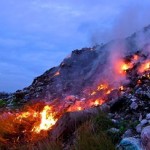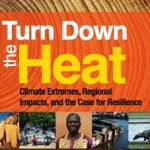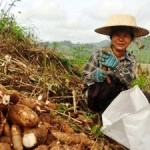
About the Author:
As a former member of the Indian Forest Service, Dr. Promode Kant has held various prestigious positions in the Indian government. He specializes in the areas of carbon sequestration, clean development mechanism, environment policy, sustainable management of forests and equity issues in tribal-owned forests, economic assessment of ecological and environmental consequences of major developmental works, and wildlife management.
He has taught as a Visiting Professor at Indira Gandhi National Forest Academy, FRI University, Dehradun, and at the Department of Forestry in the University of Joensuu in Finland. He was designated UNFCCC expert on afforestation/reforestation during 2004-2005. He is also a reviewer of many national and international journals and has many publications to his credit.
He is currently the Director of IGREC (Institute of Green Economy) at New Delhi – a non-profit society registered under the Act XXI of 1860, in order to promote research and development of projects and programmes in the field of climate change mitigation & adaptation, and works in close collaboration with international organizations like UNEP, FAO and ITTO, as also with the central and state governments of India.
In the run up to his first presidential election, Ronald Reagan became the butt of jokes and night-time comedies when he said that trees cause more pollution than the cars. This bloomer sank the hearts of Republicans and raised the hopes of his opponents who thought it would be easy to prove he was a nut-case. Of the many controversial things he did, and said, not many would match the longevity of this one in people’s memory even if it did no harm to him. But that is a different story because, as the next eight years of his presidency were to show, no blame could ever stick to this genial old man.
But Reagan may not have been altogether wrong in his claim. Trees emit a big range of Volatile Organic Compounds (VOCs) in large quantities, and these compounds, by reacting with the exhausts from the vehicles and the industries, are the cause of smogs across the continents. The Biogenic Volatile Organic Compounds (BVOCs), to distinguish them from those of anthropogenic origin, are a large number of saturated and unsaturated organic compounds including alkanes, alkenes, carbonyls, alcohols, esters and ethers. The largest quantities emitted are of isoprenoides which include isoprenes and monoterpenes.
By their very nature, the BVOCs have a very short life-time with some breaking up as soon as they are emitted while the others may last less than a day. The day-time half-lives of these compounds are usually double than night-time half-lives, which probably serves a purpose in the life-cycle of the plants because during day-time, the plants need the support of BVOCs more.
The supports that the BVOCs provide to the plants are many. These are the agents of the trees outreach to the environment, the plants’ means of communication with the environment through which it attracts the pollinators at the right time while keeping the harmful insects away. These also serve the purpose of suppressing competition from the neighbouring flora while encouraging the companions which it needs. The BVOCs are also signals of stress – a tree crying out in pain – and is emitted in profusion when there is a mass outbreak of insect and pest attack and fires and drought.
Seasons have high impact on isoprenoide emissions as has the various stages in the plant life like budding, flowering, fruiting, dormancy and leaf senescence, etc. Generally speaking, higher temperatures lead to higher emissions of BVOCs and similar is the effect of higher moisture content in the atmosphere. The emissions differ with the age of the trees, usually rising as the trees grow fast in the younger stages and then stabilizing as the trees mature. Summer heat causes higher emission of BVOC, and the early summer monsoon period with its higher moisture and high temperature is usually the peak season for BVOC emissions in monsoon tropics of Asia.
The emission also differs greatly from species to species. Some of the species which have the highest rates of BVOC emissions are eucalyptus, causarina, pines, rubber, ficus and poplars, all of which emit high levels of isoprenes, which in turn creates an environment in which non-isoprene emitting vegetation is suppressed. Thus, the overall effect of planting large number of such species leads to a reduction in the biodiversity. That is why these plants do very well in monoculture plantations, and in nature also, they are found in pure strands or in predominance.
The BVOCs have low life-spans and wither away into a host of more stable chemical components. But in areas where there are nitrogen and sulfur pollutants from industries and vehicles, an interesting phenomenon occurs. The nitrogen and sulfur compounds react with the BVOCs forming more stable sulfur compounds that are lighter in color and form aerosols that reflect sunlight back to the outer atmosphere.

This leads to a cooling effect. The IPCC (Intergovernmental Panel on Climate Change) has assessed the overall cooling effect from aerosol as 0.7 watt per square meter. In a study of aerosol optical thickness over North America reported by Goldstein et al at University of California, Berkley, it was observed that the thickness of aerosol could not be explained only by the pollution from vehicles, industries and agriculture alone, but that the presence of forests had to be taken into consideration. When the emission of BVOC from forests was integrated in the model, not only the thickness of aerosol could be explained but also the seasonal variations in it. It is because there is a strong seasonality in the BVOC emitting events in a forest area like fruiting, flowering, emergence of new leaves and leaf shedding as also fires and increased incidences of pests and diseases.
Mass outbreak of pest and disease attack causes stress to the trees, which is expressed in terms of increased emissions of BVOCs, as the trees struggle to unload themselves of the stress-causing factors. In a study conducted on the mass outbreak of Gypsy Moth (Lymantria dispar) in France, on the effect of Gypsy Moth feeding on the apices and leaves of Mediterranean Oak (Quercus ilex), it was noticed that a new volatile organic compound was emitted after the delay of a few hours subsequent to infestation, and the emission declined rapidly when the caterpillars were removed. During the period of infestation, the temporary emission of BVOC was higher by as much as 30 percent.














